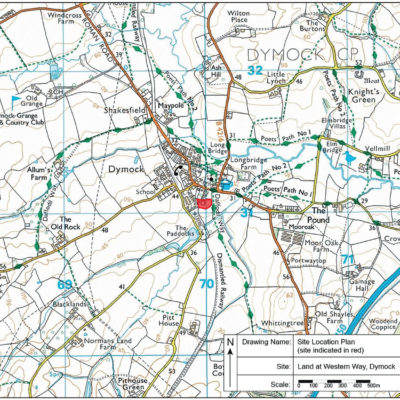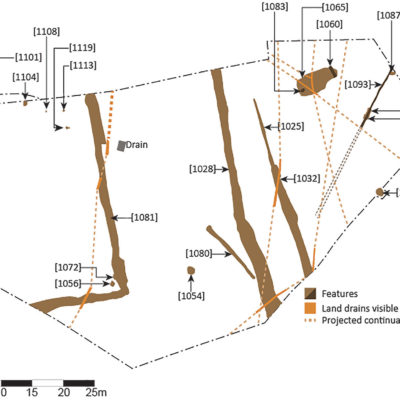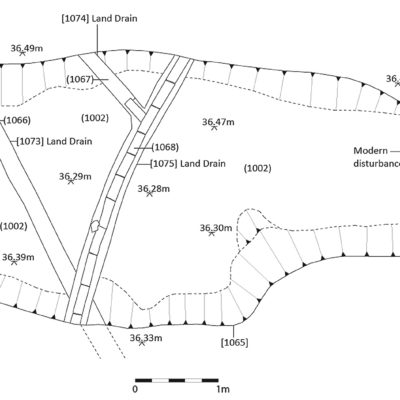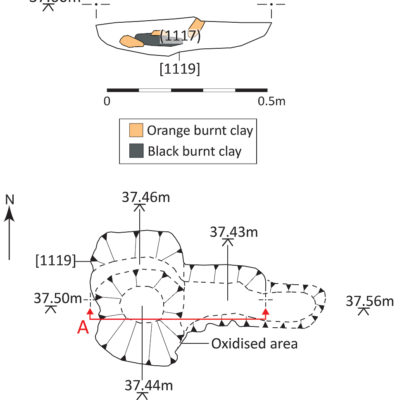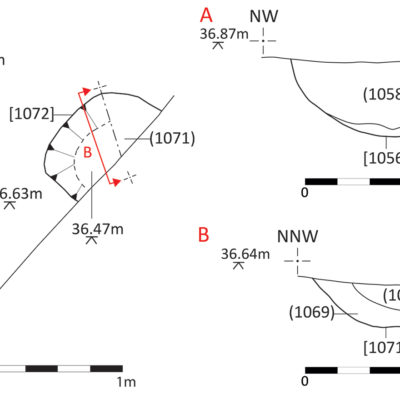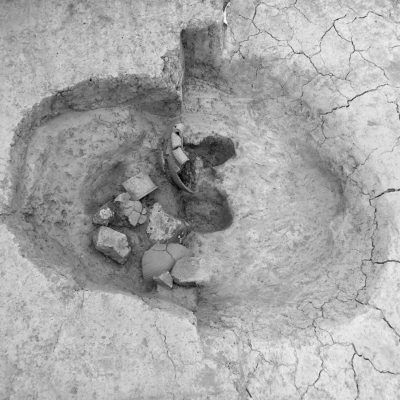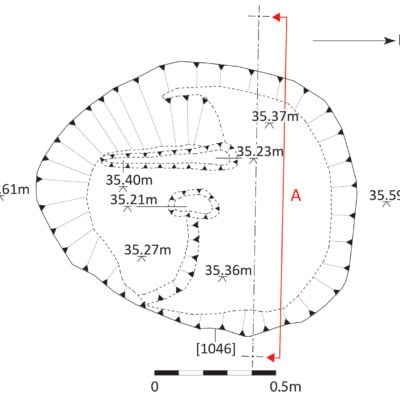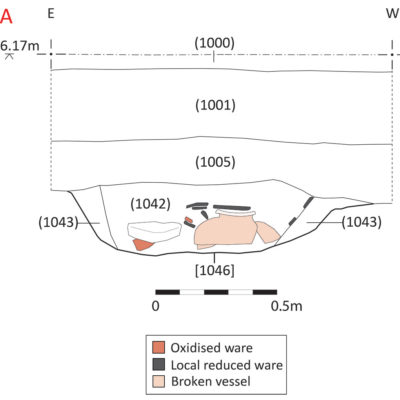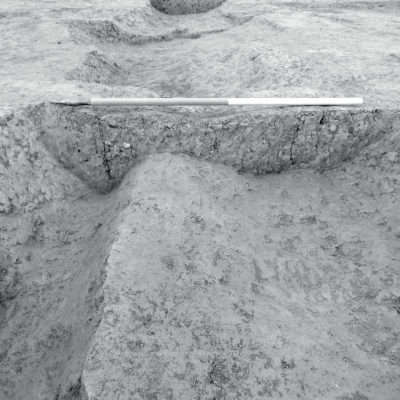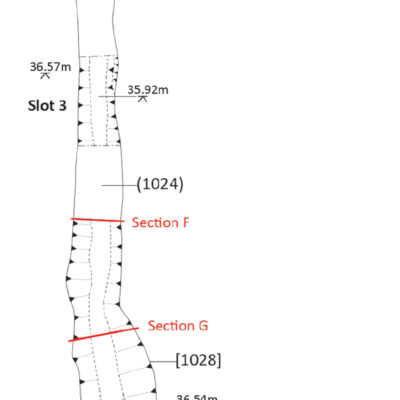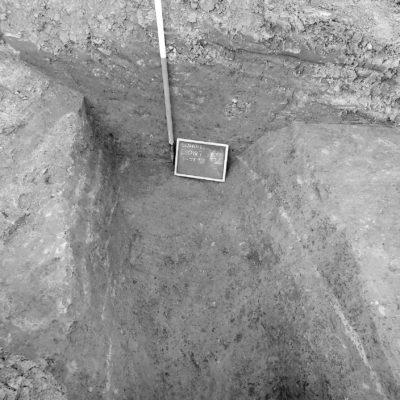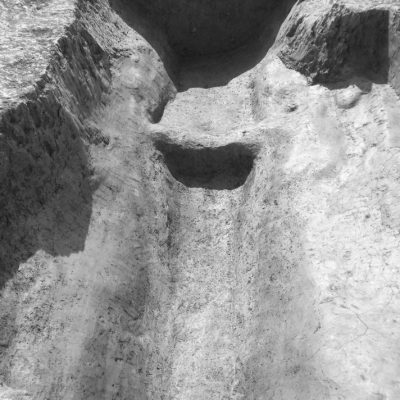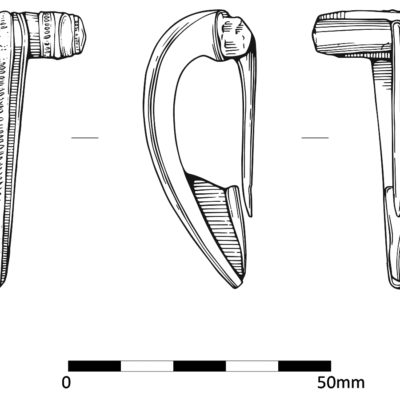Roman Industrial Activity at Western Way, Dymock
We carried out a programme of archaeological work in connection with a mixed private/social housing development at Western Way, Dymock.
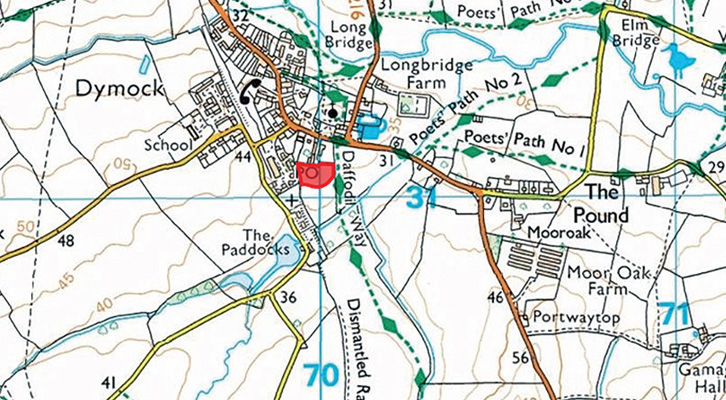
In Brief
Geophysical Survey, Archaeological Evaluation, Archaeological Excavation
Location: Dymock, HerefordshireKey Points
- Although Dymock is thought likely to have Iron Age origins – cropmarks to the east of the village show possible Iron Age enclosures
- It is not until the Roman period that stratified archaeological features appear.
Summary
An Interesting feature was the remains of a small surface-built pottery kiln similar, in terms of size and shape, to a number of other small kilns of early Roman date excavated in Britain.
The excavation finally confirmed the supposition from earlier excavations that pottery was manufactured in Dymock – it is suggested that the greywares found were an introduced, Roman-style product intended to satisfy a demand for Romanized pottery, although local native-style wares apparently remained in production.
Results
Excavation confirmed that activity on the site peaking in the later 1st and early 2nd centuries AD, appearing in all probability to have been an industrial area situated on the periphery of the Roman settlement, with the main focus of activity probably centred to the north. Roman occupation at Dymock seems to have been associated with ironworking and, for a brief period in the 1st to early 2nd centuries AD, the site was utilized possibly for agriculture and certainly for small-scale industrial production.
Dymock was probably one of a cluster of ironworking settlements focused on the Forest of Dean during the Roman period, the most substantial being Ariconium at Weston-under-Penyard (Herefs.) where slag dumps were reported to have been 6 m deep.

